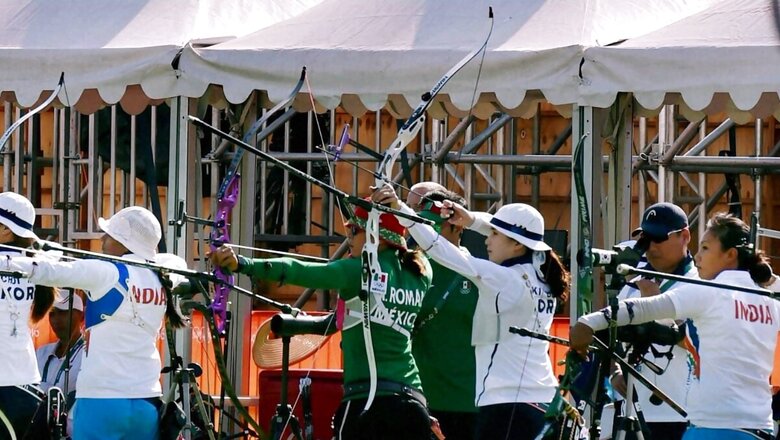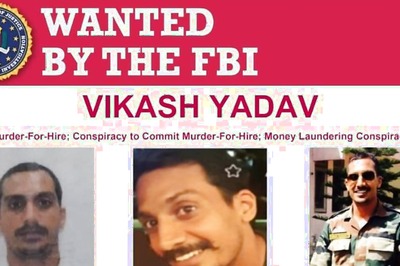
views
Why do national archery champions in India, close enough with a fourth place finish in the game, fail to make the cut in the top at big sporting events? This is what the Indian Institute of Technology (IIT)-Madras has been working on with the union government to analyse, provide insights and develop tech such as body sensors and computer vision, for the upcoming games and eventually, the Summer Olympics 2036, which India aims to bid for.
The Centre for Excellence in Sports Science and Analytics (CESSA) of IIT-Madras has been working on the project to create digital analytics for archers, which can help them and their coaches study the performance minutely, identify the gaps and improve upon it.
CESSA has been closely working with the Sports Authority of India (SAI) to develop tech for various sports and help improve performance of sportspersons with an eye on the Summer Olympics 2036 while continuing to use it for various games and championships throughout this period.
This year at the Paris Olympics 2024, though Indian archers created history by making it to the mixed team bronze medal match, they fell short of cornering it.
Performance of a total of 31 archers having represented India in world championships and the Asian Games, training at the Sonepat facility of the SAI was studied by the institute for the project, and findings of the same were presented recently to the sporting authority.
According to Prof Nandan Sudarsanam, department of Data Science and AI, archery is one of the priority sports for where there is potential to make an impact. “So, what we are doing is primarily understanding the relationship between temporal parameters of the game and performance from analysis of the data we collected from the Sonepat facility. When we were visiting SAI, Sonepat, a coach made a remark that the shooters are not in form, taking too much time to shoot in between the different phases. This got us actually thinking if there’s an actual relationship between the time taken in each of the phases and the performance of the archer,” he said.
Archery has multiple phases – set up phase, draw phase, expansion, release and follow through. It was found that particularly in the expansion phase when the archer has pulled the bow fully and is about to shoot, they set a limit where they want to reach and then look at the target for 5-10 seconds, which is the time they take to get their focus and concentration. But, another thing that happens is that muscular fatigue starts to kick in – which means two opposing forces.
“So, in order to study if taking more time suits some or not in case of others, we set up cameras to study the 31 archers with over close to a 100 shots each. With this we were able to create some relationship between these parameters and the performance,” Prof Sudarsanam said.
When looking at the aggregated data, it was found that Expansion time emerges as the most significant in terms of both duration and variability, highlighting it as a critical phase that may benefit from focus training and consistency improvement.
Also, the study found that Set Up time and Expansion time show significant differences between genders. The variables also vary significantly between Compund and Recurve bow types.
“One of the particularly strong findings that we have is that women archers in the compund bow showed that in the expansion phase there is a sweet spot of about 6 and a half to 7 seconds, and that too little time and too much time beyond that are both a problem. So, these kind of insights when given to archers help them calibrate their responses saying that this is the ideal amount of time to be taken,” he said.
At the end of this exercise, he added, it was found that the data was still showing mixed results. There were some patterns that could be seen, but these were not as statistically significant. “We were able to see some patterns but not as many that we were hoping to see, they were not as statistically significant,” he said.
“So, it was decided that instead of giving the insights back to them, we create an archery analytics system, which is the plan we have, which was received with a lot of enthusiasm by SAI as well, and create this as an analytics product where data is captured for each individual archer because two different archers might behave in a very different way, which is why we may not be seeing a global trend. It’s like almost a customised feedback for each individual for improvements in their performance,” the professor said.
Sports like archery and shooting lend themselves very well into data analytics – there is action, and a clear score at the end. Unlike other sports, it allows one to modularise the sports whereas something like football, basketball or hockey have a lot of interplay dynamics because these are a group versus individual.
Now that the findings are at hand, the institute is working to build an analytics system with a sensor-based approach. “This is still in early stages. We are exploring the use of videos and vision as well as the use of body sensors. Archers and their coaches can have direct access to the system, where an archer goes, puts on some body sensors, shoots some arrows and comes back to immediately see in their phone or computers how their performance has varied with time taken in each phase,” he said.


















Comments
0 comment